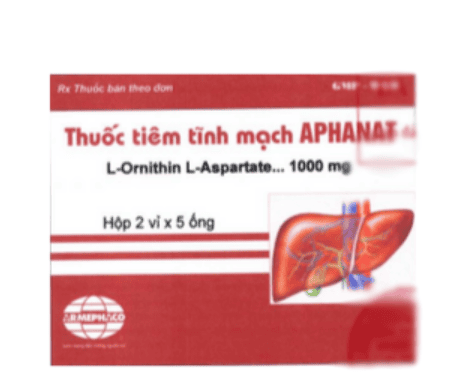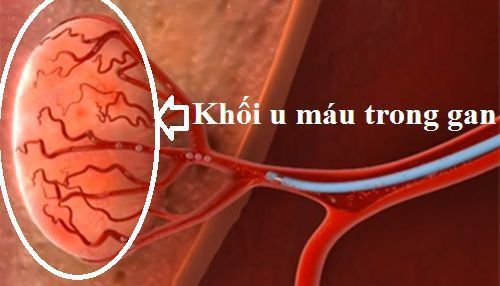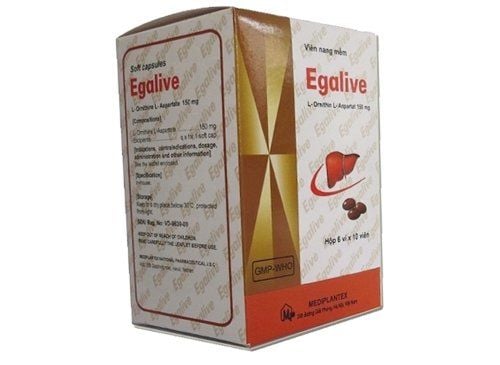This is an automatically translated article.
Hemangioma in the liver is the most common benign tumor of the liver. Although hemangiomas in the liver are benign, they can have some dangerous complications, especially in pregnant women.1. What is a hemangioma in the liver?
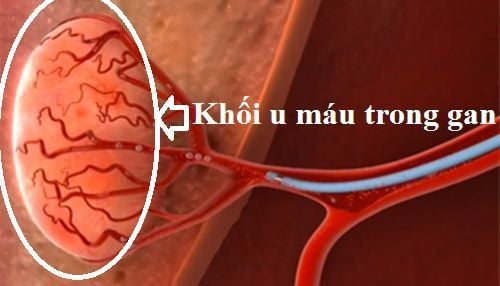
U máu trong gan là một khối u trong gan không ung thư (lành tính).
Most cases of liver hemangioma are discovered incidentally when examining another disease or detected through laboratory tests. People with liver hemangiomas rarely experience signs and symptoms and usually do not need treatment.
There is no evidence that an untreated hemangioma can lead to liver cancer. It can be reassuring to know you have a mass in your liver, even if it's a benign mass, because it can cause complications, especially bursting of blood vessels in the liver.
In most cases, liver hemangiomas do not cause any signs or symptoms. When liver hemangioma causes signs and symptoms, they may include:
Right upper abdominal pain Feeling full after eating only small amounts of food Nausea Vomiting However, these symptoms are nonspecific and it could be something else, even if you have a hemangioma.
It is not known what causes liver hemangioma to form. Doctors believe that liver hemangiomas are congenital - meaning you are born with them.
A liver hemangioma usually occurs as an abnormal collection of blood vessels less than 1.5 inches (about 4 cm) wide. Sometimes hepatic hemangiomas may be larger or occur in multiples. Large hemangiomas can occur in young children but this is very rare. In most people, liver hemangiomas will never develop and never cause any signs and symptoms. But in a small number of people, a liver tumor will grow to cause complications and require treatment. It's not clear why this happened.
Trắc nghiệm: Làm thế nào để bảo vệ lá gan khỏe mạnh?
Làm test trắc nghiệm kiểm tra hiểu biết về gan có thể giúp bạn nhận thức rõ vai trò quan trọng của gan, từ đó có các biện pháp bảo vệ gan để phòng ngừa bệnh tật.2. Risk factors
Factors that can increase your risk of liver hemangioma that will cause signs and symptoms include:Your age: Liver hemangioma can be diagnosed at any age, but it is diagnosed universally. Most common in people aged 30 to 50 Your gender: Women are more likely to be diagnosed with liver hemangioma than men Pregnancy: Women who have been pregnant are more likely to be diagnosed with hemangiomas liver than women who have never been pregnant. It is believed that the hormone estrogen, which increases during pregnancy, may play a role in liver hemangioma growth Hormone replacement therapy: Women using hormone replacement therapy for menopausal symptoms may be diagnosed diagnosed with hemangioma than women without the disease.
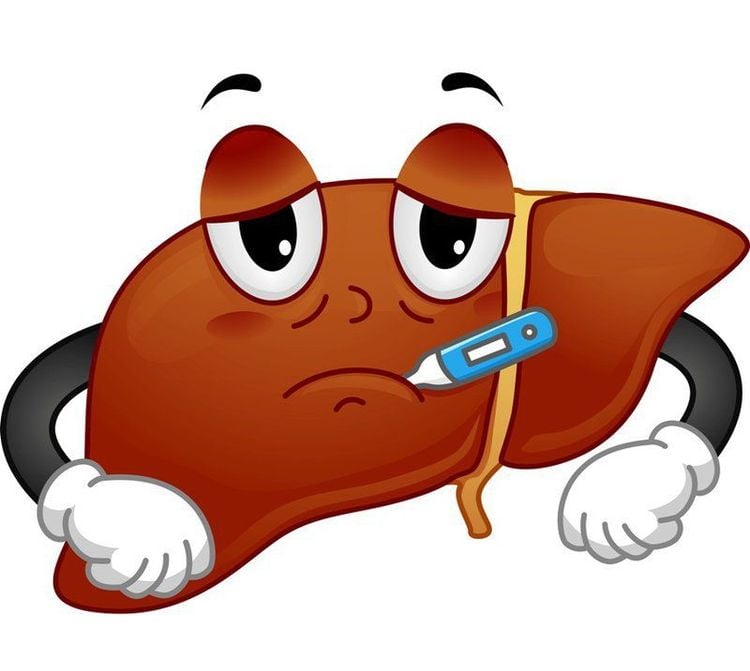
Các yếu tố có thể làm tăng nguy cơ mắc bệnh hemangioma gan sẽ gây ra các dấu hiệu và triệu chứng
3. Dangerous complications of hemangiomas in the liver
Hemangiomas in the liver rarely cause complications. However, for pregnant women who are taking hormone therapy (including birth control pills) or have liver disease, there is a chance of developing the following complications:Widespread hemangioma: The woman has been diagnosed Patients with liver hemangiomas face an increased risk of complications if they become pregnant. The female hormone estrogen, which increases during pregnancy, is thought to cause some liver hemangiomas to grow larger Liver damage Pain: A growing hemangioma can cause signs and symptoms that may require treatment, include pain in the upper right quadrant of the abdomen, abdominal bloating, or nausea. Having a liver hemangioma doesn't mean you can't get pregnant. However, discussing possible complications with your doctor can help you make a more informed choice.
Medications that affect hormone levels in your body, such as birth control pills, can cause complications if you are diagnosed with hemangiomas. But this is controversial. If you are considering this medication, discuss the benefits and risks with your doctor.
4. Diagnosis of hemangiomas in the liver

Các xét nghiệm và thủ tục được sử dụng để chẩn đoán u máu.
Ultrasound, an imaging method that uses high-frequency sound waves to create images of the liver Computerized tomography (CT) scans, combines a series of X-ray images taken from different angles of your body and uses computer processing to create cross-sectional (slices) images of the liver Magnetic resonance imaging (MRI), a technique The technique uses magnetic fields and radio waves to create detailed images of the liver Scint Letter, a type of nuclear imaging that uses radioactive tracer material to create images of the liver. Currently, Vinmec International General Hospital is currently providing a package of screening and early detection of liver cancer to help screen for liver cancer, detect liver cancer early to have an appropriate and effective treatment plan. for patients. Customers who have a high risk of liver cancer such as: family history of liver cancer, viral or alcoholic cirrhosis, hepatitis B, chronic hepatitis C, alcoholism or regular alcohol consumption,. .. should go for regular liver cancer screening.
When registering for the Liver Cancer Screening and Early Detection Package, the patient will be directly examined by a specialist, will be given tests to assess liver function, screen for hepatitis B, hepatitis C and hepatitis C. diagnostic imaging for malignant tumors. With a system of modern machinery and a team of highly qualified and experienced doctors, Vinmec is committed to the best protection for the health of patients.
Please dial HOTLINE for more information or register for an appointment HERE. Download MyVinmec app to make appointments faster and to manage your bookings easily.




